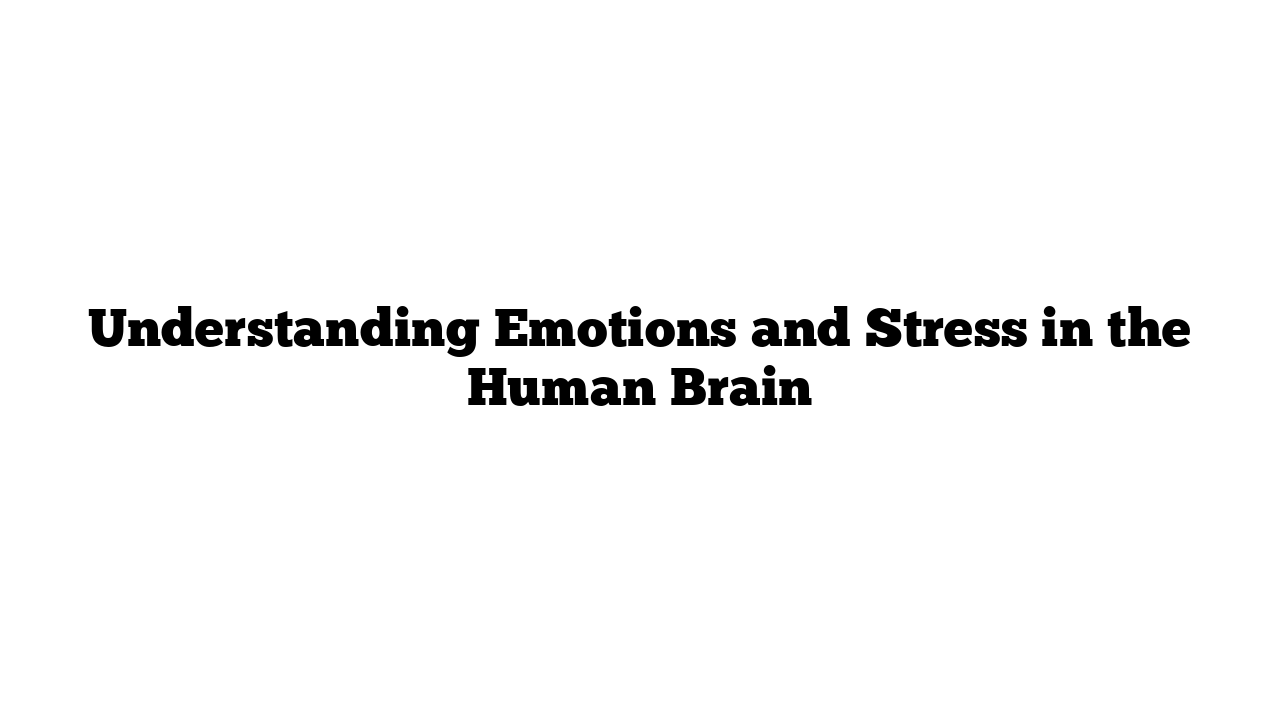Introduction to Emotions and Stress: How They Shape Our Lives
In the world of living creatures, certain behaviors emerge across the animal kingdom. However, only a few species exhibit what we recognize as “emotions.” Emotions are complex reactions in the brain, often instinctual or intuitive. While many mammals, including humans, experience a range of emotional states like anger, joy, fear, and sadness, these feelings don’t always directly relate to reason or logic.
So, why do humans experience emotions? From an evolutionary perspective, emotions serve specific functions. They not only shape our behavior but also impact our survival. This article explores the origin and physiology of emotions, their connection to stress, and how they impact our health.
The Purpose of Emotions in Evolution
The study of emotional responses dates back to Charles Darwin, who observed emotions in various animal species. He proposed that emotions evolved to communicate intentions. For example, when an animal feels threatened, it may adopt an aggressive stance—baring teeth, leaning forward, or making loud sounds—to deter predators or rivals. Such behaviors help animals avoid conflict and conserve energy for survival, making these emotional responses advantageous traits.
On the flip side, submissive behavior is expressed through a downward posture, lowered gaze, and other physical signs that communicate a lack of threat. This behavior also aids survival by reducing confrontations, highlighting how emotions and survival are intricately linked.
How the Brain Processes Emotions
The brain’s emotional responses have fascinated researchers for centuries. In the late 19th century, the James-Lange Theory of Emotion emerged, suggesting that sensory stimuli trigger physical responses, which then create an emotional experience. In other words, physiological states, like a racing heart, are thought to drive emotions. However, this view contradicted the common belief that emotions lead to physical reactions.
Later, the Cannon-Bard Theory proposed that external stimuli trigger both physical and emotional responses simultaneously, not in a sequence. Today, experts view these processes as interconnected. Perception, emotion, and physical responses all influence one another, creating a complex emotional experience.
The Role of the Limbic System
The limbic system plays a central role in emotional processing. This system includes structures like the amygdala, hippocampus, and hypothalamus, each crucial in creating and expressing emotions. For instance, the amygdala is responsible for assigning emotional significance to stimuli, especially those linked to survival. The amygdala also communicates with the hypothalamus to initiate physical responses, such as increasing heart rate when we experience fear.
Notably, certain aspects of emotional expression, like facial expressions, are consistent across human and primate species. Research suggests that six primary facial expressions—anger, disgust, fear, happiness, sadness, and surprise—are universal. The “facial feedback hypothesis” even proposes that simply forming a facial expression can influence one’s emotional state.
Fear: The Easiest Emotion to Study
Fear is the most studied emotion, as it is straightforward to observe across different species. When faced with a threat, animals display defensive or aggressive behaviors. This is where the target-site concept comes in—animals instinctively target specific areas of an opponent while protecting their own vulnerable areas. Such behaviors are key to survival and are deeply ingrained in the brain’s structure.
Interestingly, fear and aggression vary by gender and social roles. For example, social aggression, often associated with dominance in male mammals, is less common in females, except for mothers defending their young. Studies also link testosterone levels to aggressive behavior, although the relationship is still under investigation.
Understanding the Stress Response
Stress is the body’s reaction to threats, whether physical, psychological, or social. While short-term stress responses can be beneficial, helping us react quickly to danger, chronic stress can harm our health. When we experience stress, the HPA (hypothalamic-pituitary-adrenal) axis is activated, releasing hormones like adrenocorticotropic hormone (ACTH) and cortisol. These hormones increase heart rate and prepare the body to respond to threats.
The two-system view of stress includes both the HPA axis and the sympathetic nervous system, which releases epinephrine and norepinephrine. These systems work together to create the stress response, but chronic activation can lead to conditions like high blood pressure and weakened immune function.
How Stress Impacts Health
Excessive stress can contribute to health issues such as gastric ulcers and metabolic disorders. Stress affects immune function in complex ways: while brief stressors may enhance immune response, prolonged stress suppresses it. For example, cells like T-cells and B-cells have receptors for cortisol and adrenaline, which influence immune reactions. This connection between stress and immunity is an emerging area of research known as psychoneuroimmunology.
Studies show that psychological stressors, like social evaluative threats (where we fear negative judgment from others), reliably activate the HPA axis. This makes sense in an evolutionary context—maintaining social relationships was vital to survival, which explains why modern social stressors can be so impactful.
Closing Thoughts
Emotions and stress are not just fleeting reactions; they play essential roles in our survival, social interactions, and health. Our understanding of these processes continues to evolve, and ongoing research into brain function, the immune system, and stress responses promises even deeper insights. Emotions shape our actions and connections, making them fundamental to human experience.
To learn more about how emotions and stress impact health, visit medicaltimes.io.
